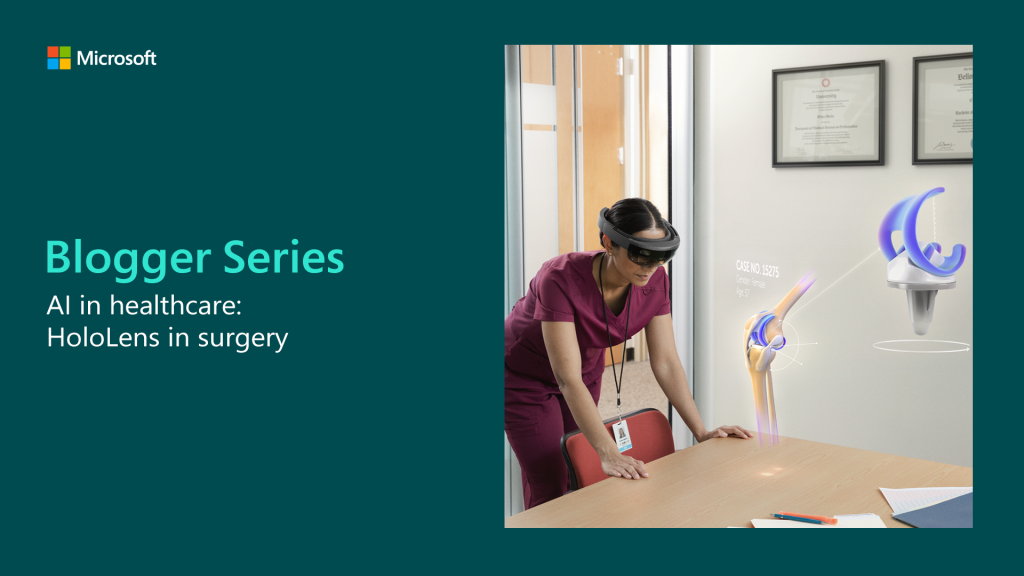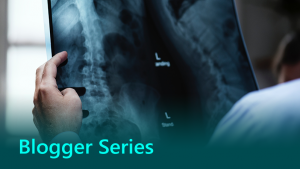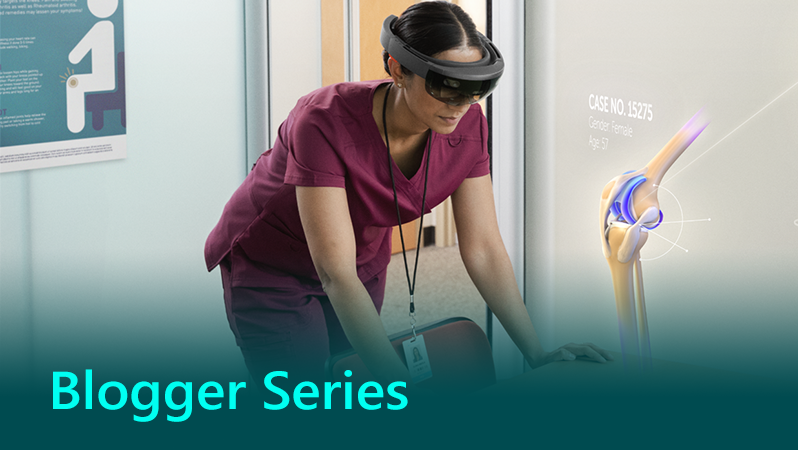
AI in healthcare: HoloLens in surgery
In my role I have the privilege to work with NHS Trusts on the cutting edge of digital transformation, so I regularly get to see the inspiring and, quite frankly, mind-blowing use cases of how our devices are being used. Although I live this day in, day out, the excitement about what is possible never really goes away. I’m aware that many nurses and doctors in the NHS may have never heard about some of this, so today I bring you the HoloLens and Surface Go. If this blog doesn’t completely blow your mind, just have a think about what AI brings to the equation!
Microsoft HoloLens and Surface Go are being used with incredible impact in the NHS. From reading vitals remotely through a camera, to enabling remote collaboration for first line workers.
HoloLens in surgery
Microsoft first shipped Kinect eight years ago. This was the first AI device with speech and vision. We then took that technology forward with Microsoft HoloLens. HoloLens is the first self-contained, holographic computer, enabling you to engage with your digital content and interact with holograms in the world around you. Just working with the HoloLens team for healthcare at Microsoft has pushed me up the ‘cool ratings’ as a mum! When first introduced, it was never imagined how quickly this would take off in healthcare and the wide implications it would have.
Surgeons at Alder Hey – one of the largest children’s hospitals in the UK – will use HoloLens to view patient information while they’re operating on them. Rafael Guerrero, cardiac surgeon at Alder Hey, said Microsoft HoloLens would enable surgeons to have a patient’s scans in front of them and allow them to view medical images and notes while performing an operation, without using their hands.
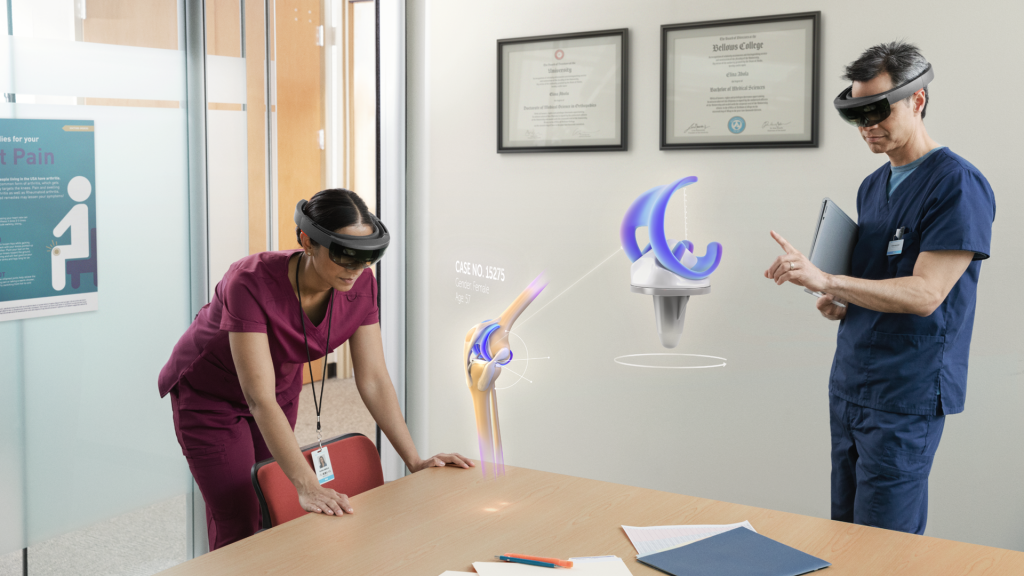
“Imaging a patient’s heart from the inside and outside is absolutely essential. I have to visualise that 3D view in my head in order to do this operation. You can display those images on a screen in the operating theatre sometimes, but it’s not easily accessible and I can’t leave in the middle of an operation to get more information about my patient. In many cases, the heart has already stopped in order for us to operate. If I can use technology to obtain that information, to see those images in front of me, that helps me tremendously and improves the outcome for my patient.”
– Rafael Guerrero, cardiac surgeon at Alder Hey
Using HoloLens to ‘look inside’ patients prior to surgery
In a similar use case, surgeons at Imperial College Healthcare NHS Trust have been using Microsoft HoloLens to ‘look inside’ patients prior to operating on them.
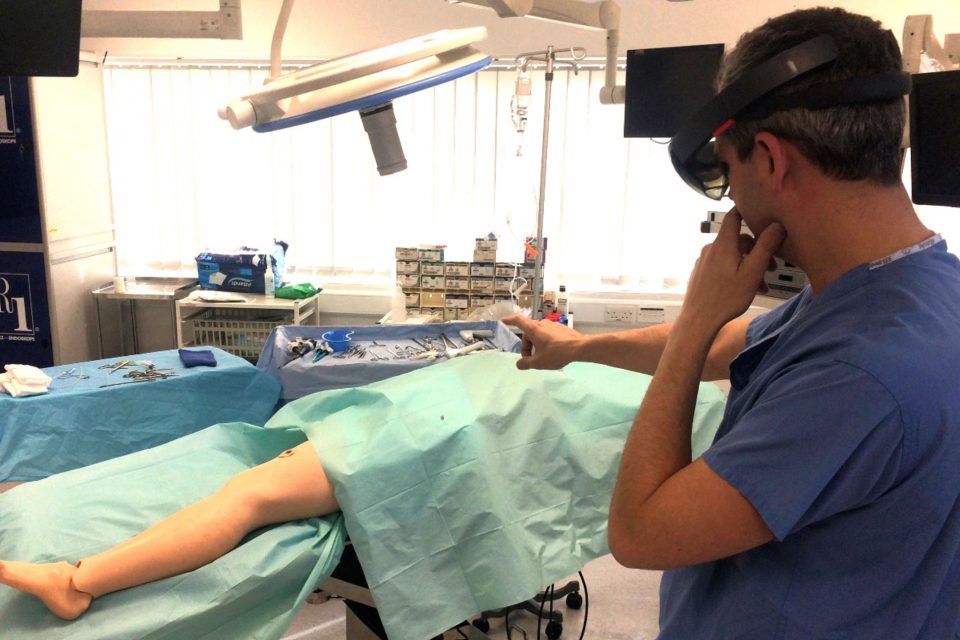
The latest announcement brought the new app that will help empower first line workers – the first workers to interface with customers and triage problems: Microsoft Remote Assist. Microsoft Remote Assist enables remote collaboration via hands-free video calling, letting first line workers share what they see with any expert on Microsoft Teams, while staying hands-on to solve problems and complete tasks together. When I first wore HoloLens and made a call using the app to a colleague, the immediate use cases filled my head! Paramedics and first responders could very easily communicate hands-free with specialist consultants whilst at the scene, and get emergency advice and triage, with the specialist clinician seeing through the eyes of the paramedic and being able to interact. It’s very hard to explain on a written page when the technology involves holographic images, but you can see it in action here.
A Surface Go solution to read vitals remotely
Next, we have some amazing use cases for AI on the Surface Go.
A new Microsoft partner called LifeLight is providing a solution that delivers incredible medical grade vital signs, such as blood pressure, in a few seconds from a selfie camera on a mobile device. In my role at Microsoft, I’m excited by the projects I hear about on a daily basis, but when I saw this in action, it rendered me speechless for the first time. I stood completely free of any wires or human contact, looked into a Surface Go, and the app read my vital signs. The potential of this solution really is endless.
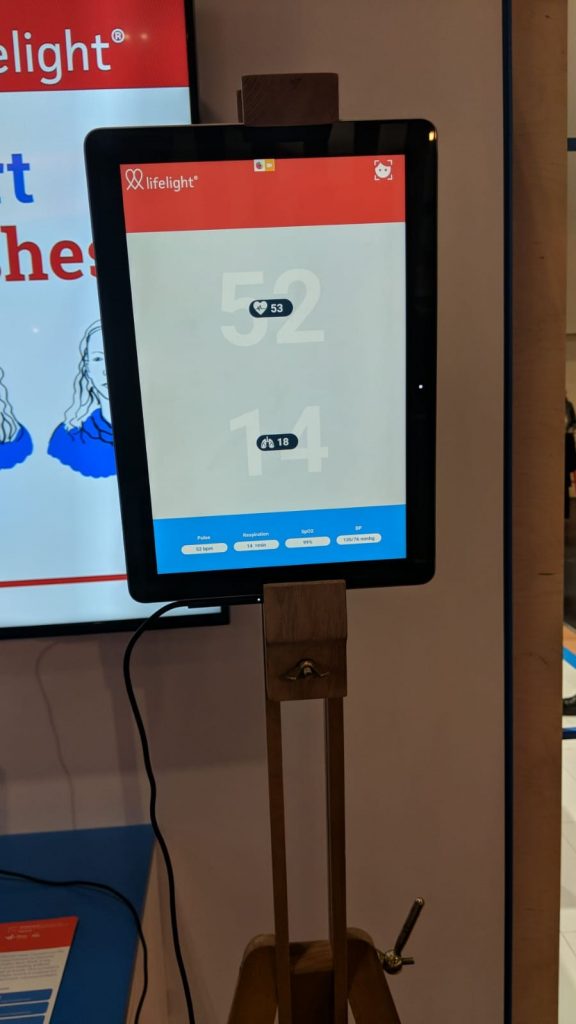
If used as triage into acute care, the solution could save time by taking vital signs on entry. If used alongside telehealth solutions, vitals could be seen live during a Skype consultation for example, as well as wellness and self-management apps, and tracking.
Microsoft partner, GPC, has a fantastic solution for wound care showcasing the power of AI solutions using a RealSense camera and Surface Go. In the UK, the NHS spends £5.3 billion on patients on an annual basis, and £1 billion per year on patients with post-operative wounds. Measuring the wounds is often subjective, and classification on their severity can often be incorrect. The solution captures 3D wound images on the consultant’s laptop, tablet, or smartphone, and can then accurately and automatically measure essential wound dimensions including depth and surface area. This allows you to see changes in wound size and structure remotely, and securely, whilst being able to share with specialists to view and remeasure.
The idea of holograms in surgery is no longer restricted to the realms of science fiction. I’m genuinely so excited to see how far this technology can go, and how much it can empower our nurses, doctors, and front line workers.
Learn more

About the author
Kelly is the Healthcare Industry Manager at Microsoft UK, working with transformational digital partners and NHS customers to pilot solutions for collaborative working and empowering everyone to do more. She has 15 years’ experience working alongside the NHS, and is passionate about the power technology has to create positive change in healthcare.

